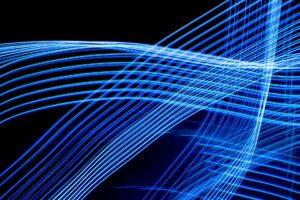Fiber lasers are widely applied in many various spheres such as medicine, aerospace, etc. So there is no wonder that fiber laser machines for marking play an important role in businesses that require engraving or adding markings to their products. Nowadays, numerous companies insist on putting their logos or special markings, containing a crucial company or product’s information, to their item.
Main principles of fiber laser marking machines
It should be noted that the principle of fiber laser marking machines’ operation is based on the use of highly concentrated energy from light generated by a laser beam of high quality, then this energy obtained by such a fiber laser system allows creating an image or writing over a product’s surface.
Also, fiber laser machines for marking are considered to be quite useful because they apply the light from a laser beam as a way of a product’s identification. Compared to the previous identification technique that used paint and ink for marking, fiber laser technology based on concentrated energy by laser beam’s light produces markings that cannot be smudged or covered over. This is the main reason why the majority of companies began to use this fiber laser system-based solution for engraving logos and descriptions on their products.
Fiber Laser marking machines’ features
Herewith, fiber laser marking machines offer numerous other reasons why it is necessary to choose them for your business:
- Fiber laser technology is a highly reliable and environmentally friendly solution;
- Laser system application on a wide range of materials;
- High-quality permanent marks on any surface;
- Cost-efficiency;
- Fiber laser marking machines are extremely durable and long-lasting;
- Resistance to harsh environmental conditions (high temperatures);
- Resistance to the process of sterilization, the laser system machine is ideal for medical and surgical equipment;
- High level of safety without the use of ink, paint, dangerous chemical matters or fumes;
- Fiber laser marking is software-based, to be precise, the machine enables to engrave any letter or character;
- Possibility to produce high-quality images on an object.
Fiber laser marking machines applications
Finally, these marking machines have numerous fields of fiber laser applications. For example, they are widely applied in the medical industry for manufacturing very specific medical tools. Fiber laser marking machines allows marking images, logos or even description on the medical devices that are subject of the sterilization process, herewith, the fiber laser technology does not influence the surface, consequently, it is safe to any patient.
One more fiber laser application includes marking the serial number of firearms that makes every item personal. Thus, it becomes easier to identify any firearm in the case of its stealing. Also, fiber laser marking machines are used for marking the serial number of each part of the industry during the manufacturing process.
Optromix is a fast-growing fiber laser manufacturer and a vendor of optical fiber sensors and optical monitoring systems. The company offers fast turnkey solutions and creates sophisticated fiber laser systems for special purposes. Optromix uses only its own technologies and develops a broad variety of fiber lasers. If you have any questions or would like to buy a laser system, please contact us at info@optromix.com



